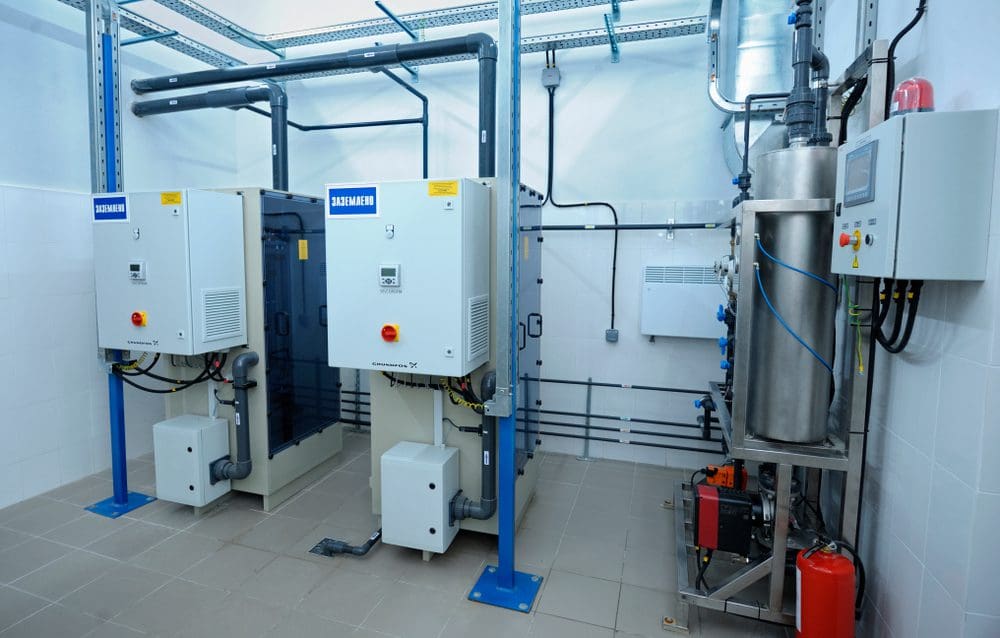The pursuit of green energy solutions to reduce the amount of damaging pollutants expelled into the atmosphere is one being tackled on a number of different fronts.
But emerging as one with enormous growth potential for investors to back is so-called green ammonia.
According to a report published earlier this year by Transparency Market Research, the market was worth USD0.04bn in 2022 but is projected to surpass USD8.1 billion by 2031. That’s a CAGR of a remarkable 76%.
What is Green Ammonia?
So exactly what is green ammonia and why is its potential so exciting?
Regular ammonia is a widely used across a broad range of industries – most notably as a key component in the production of crops for which it is in increasing demand.
The colourless gas – a compound composed of nitrogen and hydrogen – is highly soluble in water and is used extensively in fertiliser production (which accounts for around 70% of ammonia production), refrigeration and air conditioning, household cleaning products, water treatment and the pharmaceuticals industry.
It is traditionally produced through the Haber-Bosch process. This sees nitrogen gas from the air combined with hydrogen gas derived from fossil fuels – most commonly natural gas.
But it relies heavily on non-renewable energy sources and generates significant greenhouse gas emissions – in particular CO2 emissions.
It is estimated regular ammonia production is responsible for some 500 million tonnes of CO2 emissions every year.
Green ammonia, however, is produced using renewable energy sources which generates hydrogen gas through water electrolysis. This electrolysis process sees water split into its component parts – hydrogen and oxygen – with the hydrogen then combined with nitrogen gas to produce carbon-neutral, or at worse low-carbon, ammonia.

Investment Interest
As a result, it is attracting the interest of renewable energy investors keen to back the emerging energy transition industry.
In a briefing paper produced by the Royal Society in London – the UK’s national academy of sciences – it explained the benefits.
It said:
“The production of green ammonia has the capability to impact the transition towards zero-carbon through the decarbonisation of its current major use in fertiliser production.
“Perhaps as significantly, it has the following potential uses: As a medium to store and transport chemical energy, with the energy being released either by directly reacting with air or by the full or partial decomposition of ammonia to release hydrogen; as a transport fuel, by direct combustion in an engine or through chemical reaction with oxygen in the air in a fuel cell to produce electricity to power a motor; to store thermal energy through the absorption of water and through phase changes between material states – for example liquid to gas.
“With its relatively high energy density of around 3 kWh/litre and existing global transportation and storage infrastructure, ammonia could form the basis of a new, integrated worldwide renewable energy storage and distribution solution.
“These features suggest ammonia could readily be a competitive option for transporting zero-carbon energy by road, rail, ship or pipeline.”
The areas underpin the Transparency Market Research report this year which adds: “The presence of robust infrastructure is likely to positively influence green ammonia market development.
“Strides made in the generation of wind and solar power in several countries are likely to bolster market growth as green ammonia can be used to store intermittent renewable energy. Governments are focusing on increasing the share of renewable energies in the electricity grid. Expansion of the renewable energy sector would therefore propel the green ammonia market development.”
As canny investors seeking the energy companies of the future, they are increasingly looking at the growth potential of an energy carrier which has made its reputation in fertiliser but could now prove a key ingredient to easing the effects of climate change.
In June of this year, UK-based nanotechnology startup Nium raised a USD3 million seed round to develop its ‘Green Ammonia on Demand’ system that enables onsite synthesis of ammonia to slash both costs and carbon emissions.
It is among a growing number of companies hoping to clean-up ammonia production.
It will use the funds to assemble its first small-scale, low-energy-consumption reactors – called ‘minions’ — that can deliver ammonia at lower cost and lower carbon footprint.
The company says its key differentiator is its “low-temperature, low-pressure ammonia synthesis” that can deliver ammonia at “a fraction of the price and pollution of traditional ammonia production methods.”
Nium CEO and co-founder Lewis Jenkins explains: “Our patents are filed on a technology that allows you to make ammonia without the costs and emissions. We want to eliminate Haber-Bosch altogether.
“You could set up a system on the farm, anywhere in the world, where you could use solar and wind to generate hydrogen. You would have a compressor that took nitrogen from the air, while the solar and wind would power the system to synthesize ammonia onsite with our reactor.”
Colorado-based Starfire Energy is a developer of modular chemical plants for the production of carbon-free ammonia.
Funding and Support
At the end of last year, it announced a USD24 million Series B funding round. The funding will fuel its commitment to “making sustainable energy a reality” by offering “cost-effective, modular, and easily implemented carbon-free ammonia production and ammonia cracking systems”.
Starfire Energy is currently in discussions with multiple organisations for field-demonstration programmes that will jump-start product availability and shipment worldwide.
In June 2023, Jupiter Ionics was highly commended in the international Spinoff Prize 2023 Nature Award.
The Melbourne-based start-up competed with five others for the €30,000 prize for its breakthrough work in green ammonia technology.
The Spinoff Prize recognises early-stage university spinoff companies that translate scientific research into products and services to make a positive impact on society.
It has so far raised USD2.5 million.
Its CEO, Dr Charlie Day, says it hopes to have its first prototype devices on a farm in Victoria this year.
He explained: “This new research is opening up a novel pathway to ammonia production, over a century after Haber and Bosch first developed their eponymous process.
“Importantly, it will enable production at a range of scales and in a range of settings, all powered by increasingly abundant and cheap renewable energy.”
Earlier this year, New York-based Amogy announced its USD139 million Series B-1 fundraising. This funding will enable Amogy to continue its organisational development to support commercialisation, begin manufacturing of its innovative ammonia-to-power technology, and bring its first product to market in 2024.
It feeds liquid ammonia through its cracking modules integrated into a hybrid fuel cell system, which powers electric motors for zero-carbon transportation including shipping.
It plans to present its ammonia-powered, zero-emission tugboat in late 2023 — which is three times larger than the system that was field-tested on Amogy’s ammonia-fuelled semi-truck earlier this year.
If that proves a success, it plans to present its first commercial offering in 2024.
Seonghoo Woo, CEO of Amogy, explained:
“We are working from a place where we have no doubt that our technology will change the world.”
It’s not just startups getting in on the act either. Established players can see the potential.
Danish firm Topsoe is investing heavily in the sector.
It explains: “Shipping emits over one billion tonnes of CO2 each year. At the same time, ammonia production emits another 500 million. Together, they account for 5% of the world’s annual CO2 footprint. Numbers that large shouldn’t stay that way, and green ammonia is the reason why they won’t.
“Green ammonia’s potential impact on our decarbonisation journey is tremendous. As a hydrogen-storage and maritime-fuel solution, it offers the ability to safely phase out fossil fuels from the world’s most challenging transport sectors. And as a key component of fertilisers, it can transform agriculture.”
Conclusion
Plenty of money is being ploughed into green ammonia production facilities – all of which can take a toll on startups. It can also point to high price points for a product which while better for the environment may not be for company budgets used to regular ammonia price points. All of which suggests you may be playing the long game. But the confidence in the marketplace’s growth should provide investors with some comfort. Returns may not be immediate, but if you do your due diligence and back the right company, the potential rewards could be significant.
Companies to Watch
Amogy, Starfire Energy, Nium, Topsoe, Jupiter Ionics








